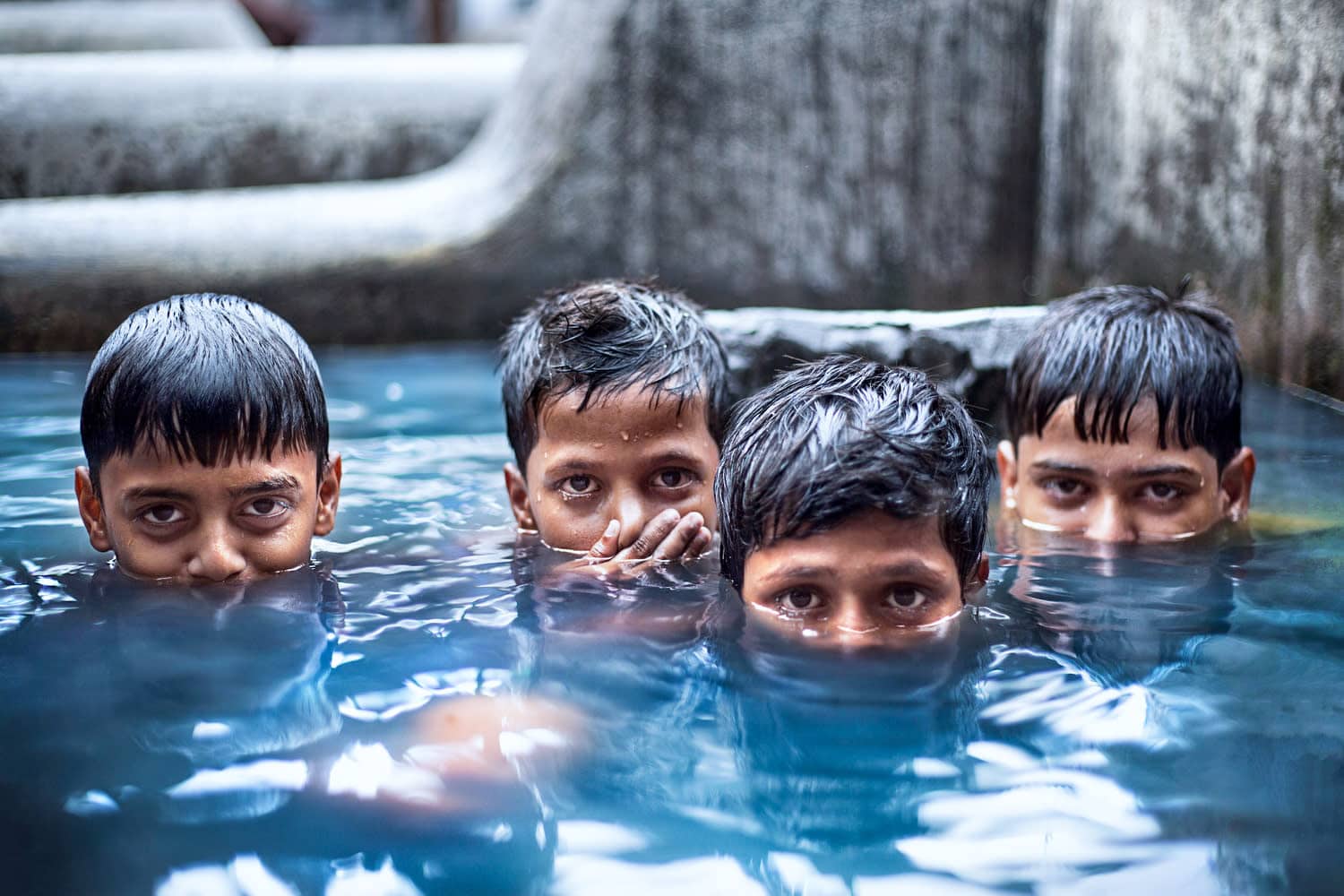Nearly every photograph captured by Emily Garthwaite looks like a painting, something ethereal or entirely imagined by an artist’s vision. Her subjects—which range from children playing outside their homes in Iraq, to Afghan women in traditional attire, and young Iranian men in protest—appear both untouched and inspired. They seem wholly representative of their true selves and their surroundings, but with the presence of something bigger. It’s photographs like these that have earned Garthwaite a reputation for capturing that elusive quality of human connection in her work.
The London-based photographer has travelled widely for her work, documenting deforestation in Indonesia, coffee farming in Ethiopia, elephants in Jaipur, and refugees in Calais. In 2015, Garthwaite was chosen as a finalist for the Wildlife Photographer of the Year in the category of photojournalism, and at just 24 years old, her stunning environmental and humanitarian photography has been published by the likes of Lula, I-D, Suitcase, and My Modern Met.
Her first co-directed documentary, on the Arba’een pilgrimage in Iraq, will debut this month in Italy. Garthwaite will also be exhibiting her photo series Iraq: The Road to Arbaeen and A Portrait of India internationally this year.
We got in touch with Garthwaite to learn more about the process behind her photojournalism, discussing how she approaches strangers for photographs, the research that goes into her images, and why she sees photography as a form of therapy.
Format Magazine: Tell me a bit about your work.
Emily Garthwaite: I started taking pictures when I was 15 in the same kind of playful manner that someone might pick up a guitar. I had aspirations of becoming a painter, and actually I continued to pursue that and went to Central Saint Martins in London I was frustrated because I was instantly put into film and photography. It was something that everyone around me was pushing me to do.
So I became a club photographer—that was my way into the professional sphere—and started assisting fashion photographers. I just watched how they communicated with people and how they worked and sort of came to understand how you would communicate with people.
At that point, I hadn’t really found my voice and found out how I would approach strangers. I ended up going to India and that was where everything kicked off for me and where I developed my own creative voice. At the time I had this sort of manic depression and I needed to learn about myself and learn if I could manage it. I didn’t actively go out looking for sad stories or situations. I just carried my unhappiness along and hoped that I could share stories with people and grow as a person and maybe their experiences with me could be positive as well.
Photography became this immensely important form of therapy. It’s something that has kept me focused and positive and able to express myself. I’ve never been autobiographical about my work, I’ve never turned the camera on myself, but I feel that I have quite a clear creative signature and regardless of what I photograph [people] will be able to recognize that it’s my work.
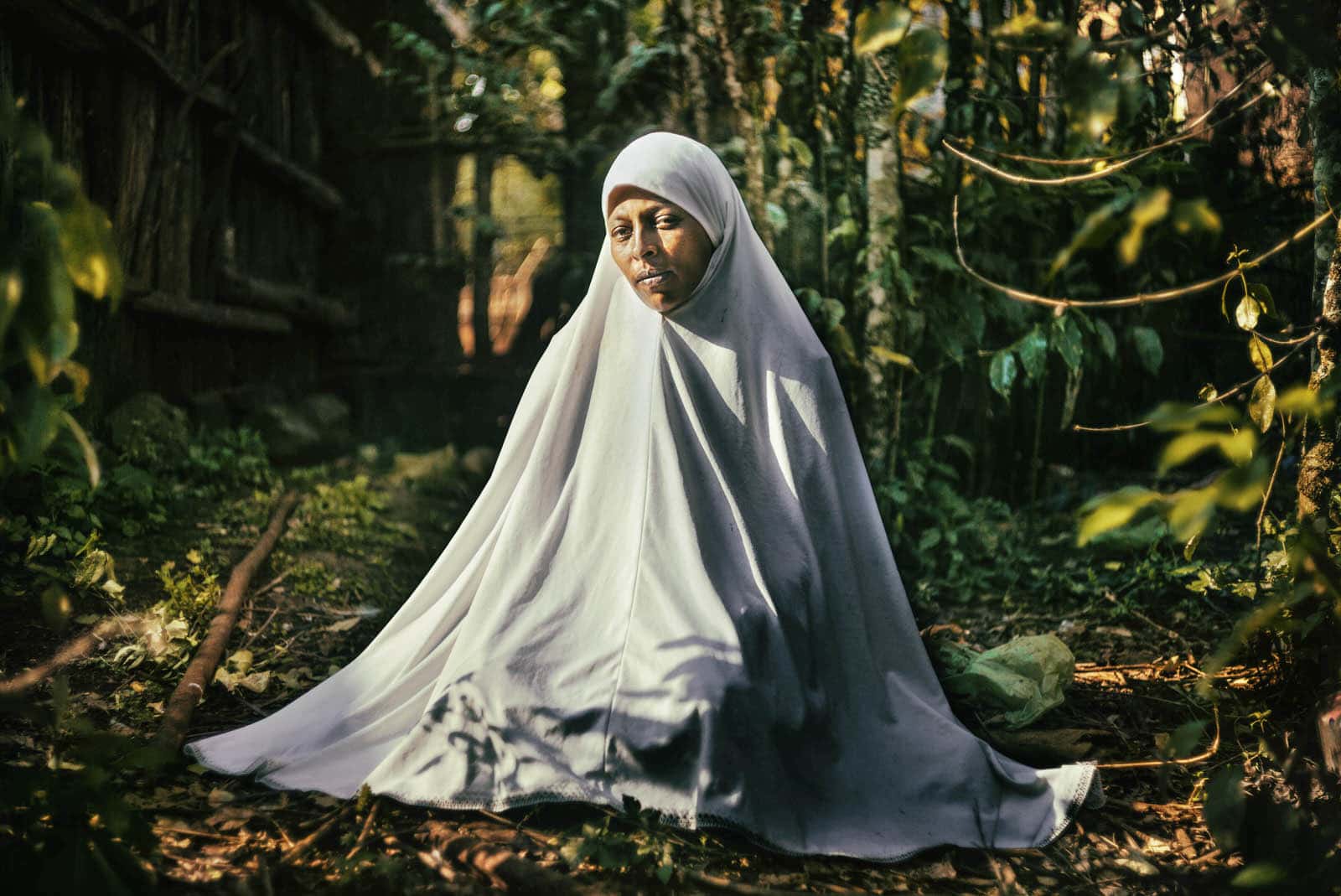
A coffee farm owner sits outside her home in Yayu, Ethiopia, from Yayu Wildforest Coffee
What influences your work?
People, intimacy, connection. I like to communicate with my subjects in any way possible. Again, photography was my way to speak to strangers and feel less isolated in the world. One of the most common questions that people ask is, how do I get close to people? I find it so interesting that everyone just everyone wants to know how I do that.
It’s always been such a simple thing, it’s just: speak to them. Some of the most terrifying, grumpy-looking people end up being the kindest. I think that I’m moving more into environmental and socially conscious work, having indulged in street photography for quite a while. My style lends itself more to human stories rather than a documentary style.
My influences are classical, old school painters. I love going to the National Gallery and I love how they use light in this painterly look. I now shoot with a Leica m240 which has allowed me to develop that painterly feel. It’s the richness of the tones that I find so important in my work. I’ve put a lot of thought into recently trying to look at what my work looks like to other people. It’s quite hard to understand it when you’re producing the work, but it’s the rich colours I always look for.
What do you hope people will learn or feel when they encounter your work?
Closeness. I really want people to feel like they’re spending time with the subject or [that] they can place themselves in that situation. I also love to transform an everyday scene, something you might have walked past, like buses or the Tube or a bridge in Mumbai which people commute on.
I did a talk recently and I asked my friends and family to describe my work. What they said most commonly was human dignity. I love to make women feel really strong. For instance, in their photographs, I try to elevate women by shooting just below. I’ve always purposely and consciously done that. I also always ask women to look at me—but not just look, I specifically ask them to look at me with strength. That does take time, but when it happens, I know that I’m photographing a woman at her best.
I feel like really engage quite intimately with the subject. It doesn’t have to [involve] that much dialogue; inevitably in a lot of these situations there’s a language barrier. It really doesn’t matter. I always feel that it’s important to spend extra time with women. They tend to be the shyest. You have to ask permission from other people to photograph them first in other parts of world. There are other boundaries to photographing women.
How do politics or culture inform your work? Is there anything you do beforehand or during a shoot to ensure you’re properly representing your subjects?
Yes, I do a lot of research. I’ve become quite obsessed. Anything that I can find out is very important.
My trip to Iraq [last] September was really difficult to be informed on. There’s been quite the media blackout surrounding it, and limited information. There was only one book I could find and it was much more based on the religious elements of this pilgrimage I photographed.
It’s called Arba’een and it’s the largest pilgrimage in the world—Muslims walk for up to 10 days [to the] Imam Husayn Shrine. It was the first time I felt I couldn’t get enough information, like the historical, political, economic background. I had to get that information on the ground. It would be a case of meeting a family or group of people and the translator providing information and me handling it and going, “How am I going to document these people?”
But, about 60 to 70% of the time it’s a very organic process where you’re just shooting what you see. There have been wonderful moments where, unbeknownst to me, I’ve documented something really important and unusual. I think having an element of surprise is good. I don’t like to Google pictures of a place [before I go], I like to see it for myself. I find that if you already know how someone else has photographed it that it kind of spoils it.
It would only ever be text-based or news-based that I would do research. Certainly the most important research that you do is when you’re speaking to people and listening to their stories. That’s where you find out the real truth.
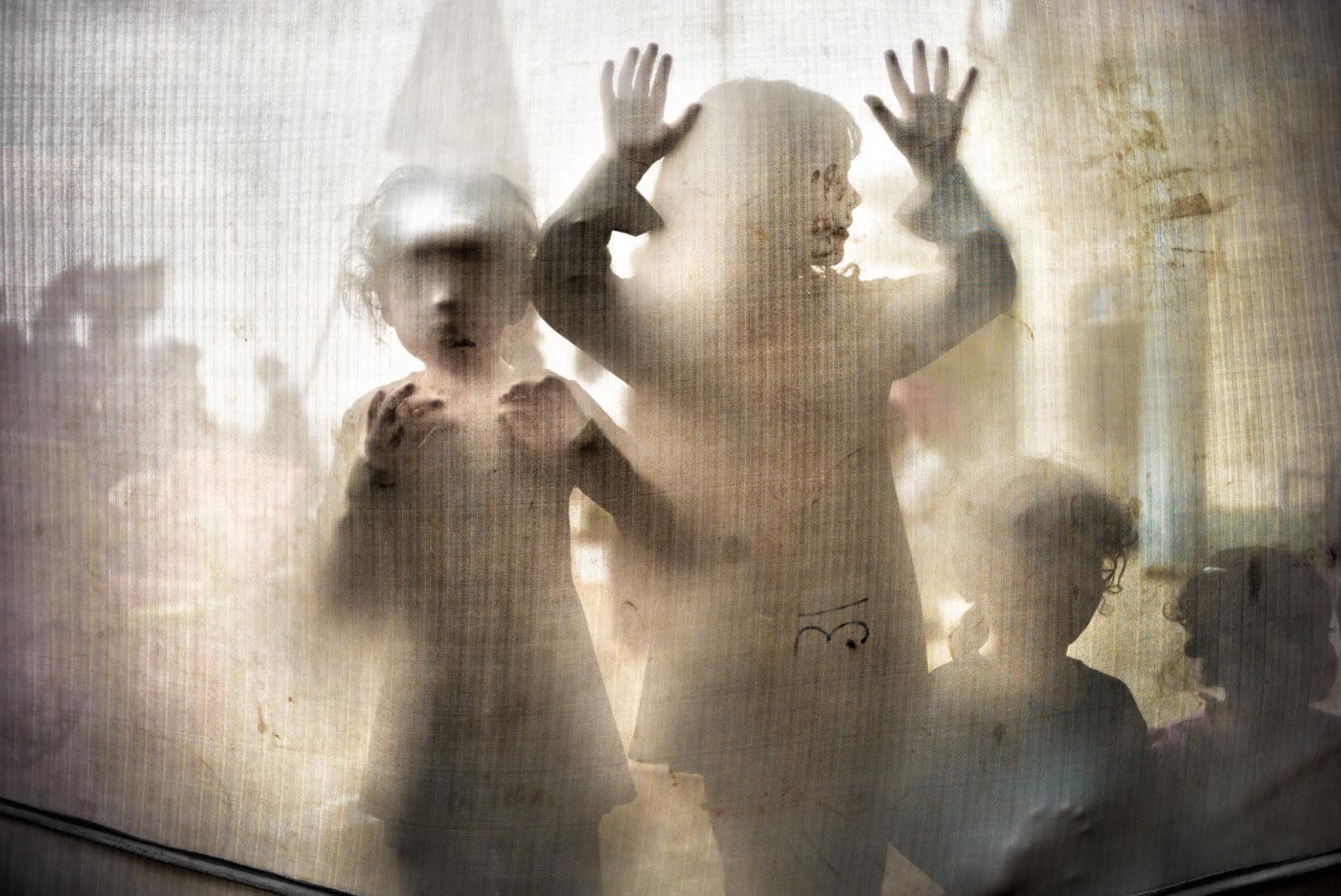
Children in Southern Iraq, from Iraq: The Road to Arbaaen
What are some elements you consider when you’re working with a new subject or in a new space?
It varies for every single situation. I only ever use natural light. So that’s the priority, how I’m going to handle the light. The other thing is just knowing that [the subject has] got some time and making them feel like it’s an inclusive experience and they’re not just being pushed around and having pictures taken of them,that it’s a very still process.
I usually have an idea of how I want to photograph them. When I first started, all of this took a long time because I would rush things, and think, “I’ve got to get this shot as soon as possible.”Now I feel like it’s a very peaceful, meditative process. I do think photography is a meditation.The calmer you are, the calmer other people are.
When I photograph children, for instance, I never raise my voice or become playful or silly. I always stay really still and I find children respond to that stillness. It’s amazing the intensity you can get from your subject when you create a very still space.
Can you tell me a bit about your travels? About where you’ve been and how you’ve managed to encounter some of the situations you’ve been in.
The most important thing that you can do to encounter situations is walk. I walk a lot. I think that’s the only way. It’s not chance, I just think that you increase your chances if you’re moving around all the time and exploring.
In terms of travels, every single trip has been quite different. For instance, I was in Thailand and we were driving back to drop the car off and just on the side of the road, there was no wind, and you could see these plumes of smoke hanging in the air and these sort of trainee monks were playing around. I shouted “stop the car!” and that was one of my favourite photos I’ve taken, of these monks in Thailand. It was such an instantaneous thing. It’s about opening doors, keeping your eyes open, and seizing an opportunity.
I know when I first started I let a lot of pictures go out of fear or uncertainty or thinking the moment’s passed. It’s about being as instinctual as possible.
How do you feel your age plays into your work? Or doesn’t?
I feel like I’m lucky to have known what I wanted to do from a young age. I think I’m more willing to do some things because of my age. I feel like I’ve grown up with my pictures. I look back at pictures and I know I’m growing up because I’m noticing things that I wouldn’t have before. There’s a wonderful naiveté to my younger photographs. You can tell that I just want to be close to people. I feel now it’s much more about elevating people and being conscious of what I’m doing.
What do you hope to achieve in the future with your work?
I want to make impactful photographs that will make people stop. I’d like to be able to blur the lines between fine art and photojournalism, where you can have an informative image and one that aligns itself with the journalistic world; and also one that you can hang up in a gallery and stand on its own two feet, perhaps even without a caption, that could be as artistic as it is informative.
See more of Emily Garthwaite’s photography at her website, built using Format.
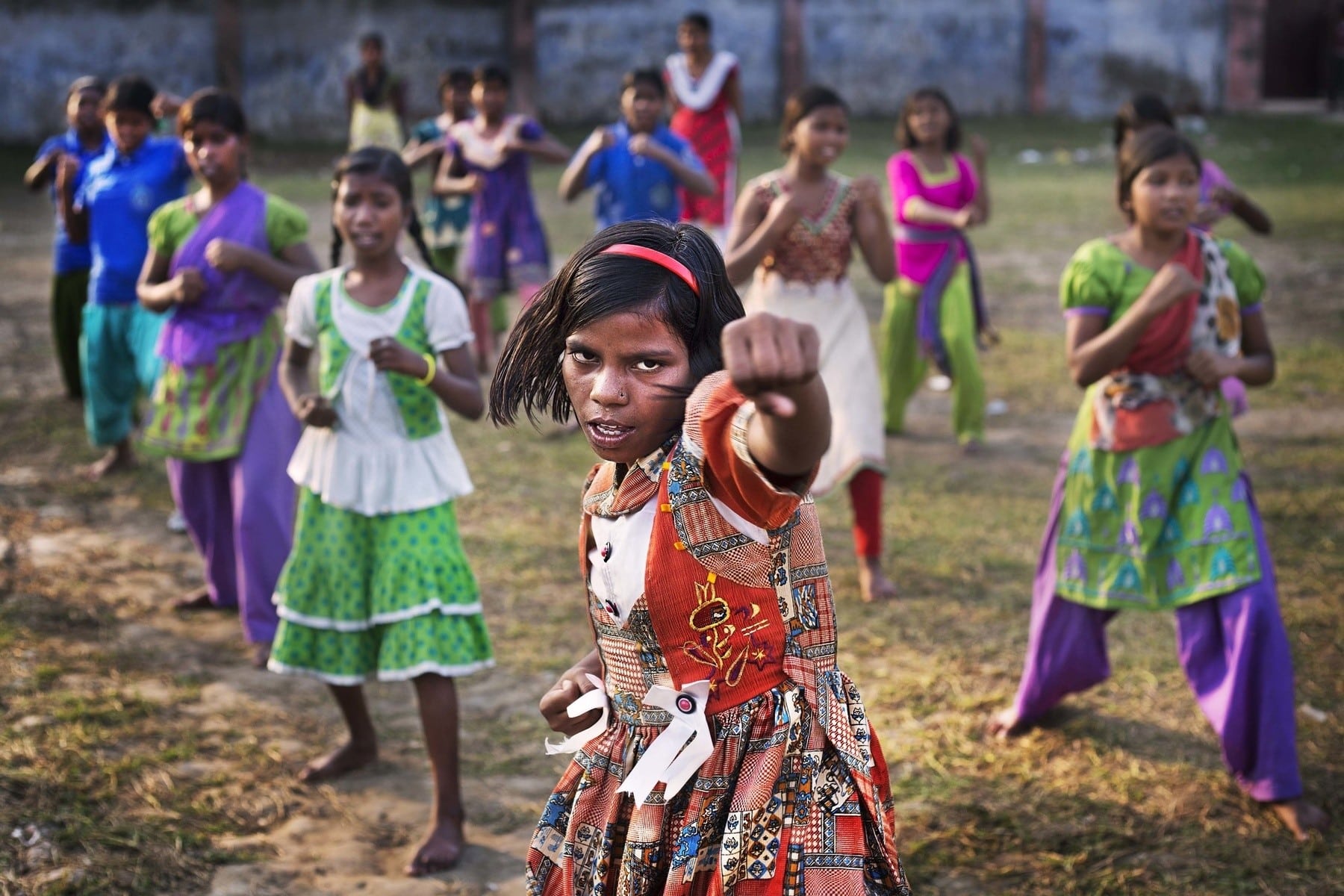
Children at a boarding school in Bihar, from A Portrait of India
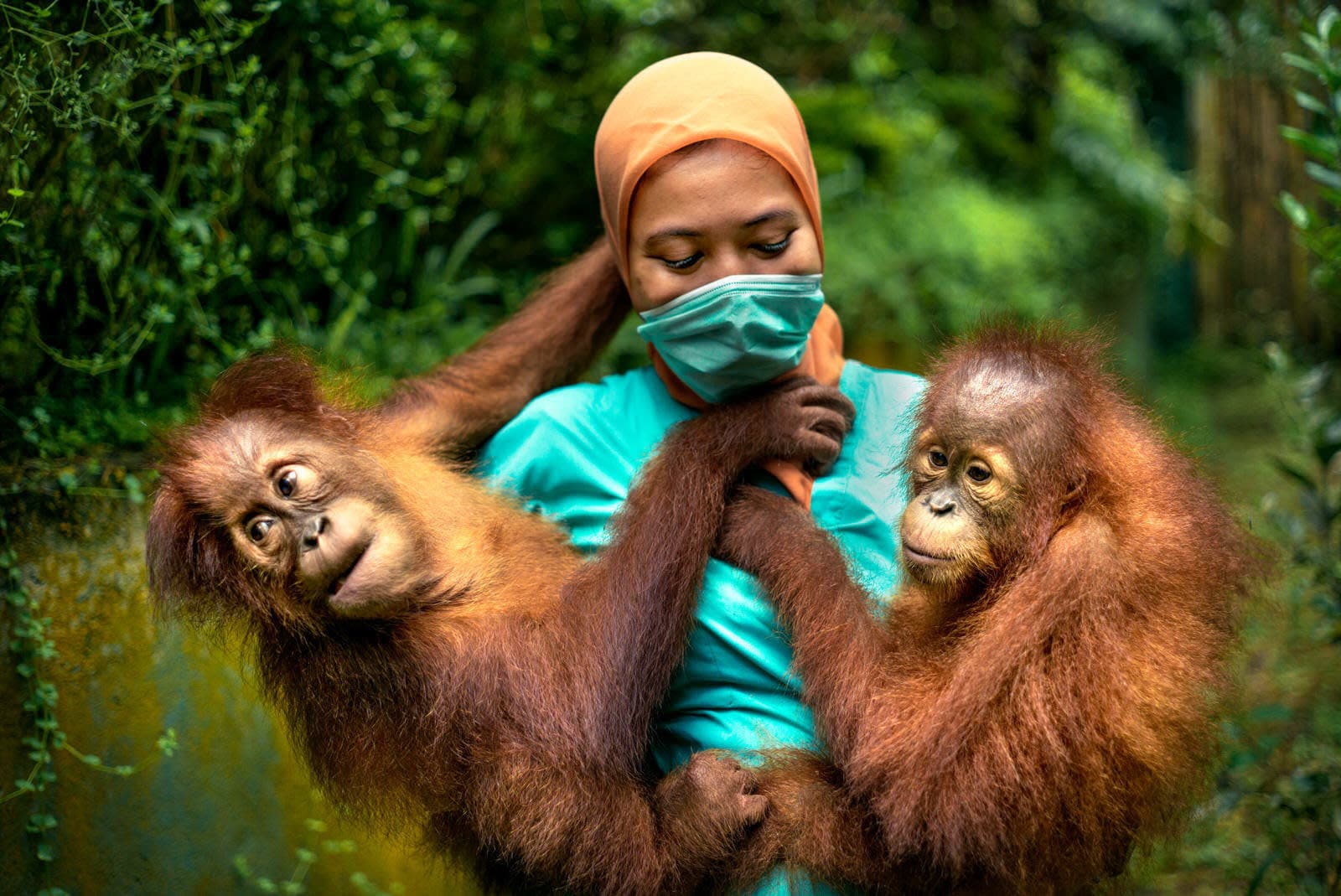
Orangutan quarantine centre in North Sumatra, Indonesia, from The Price of Palm
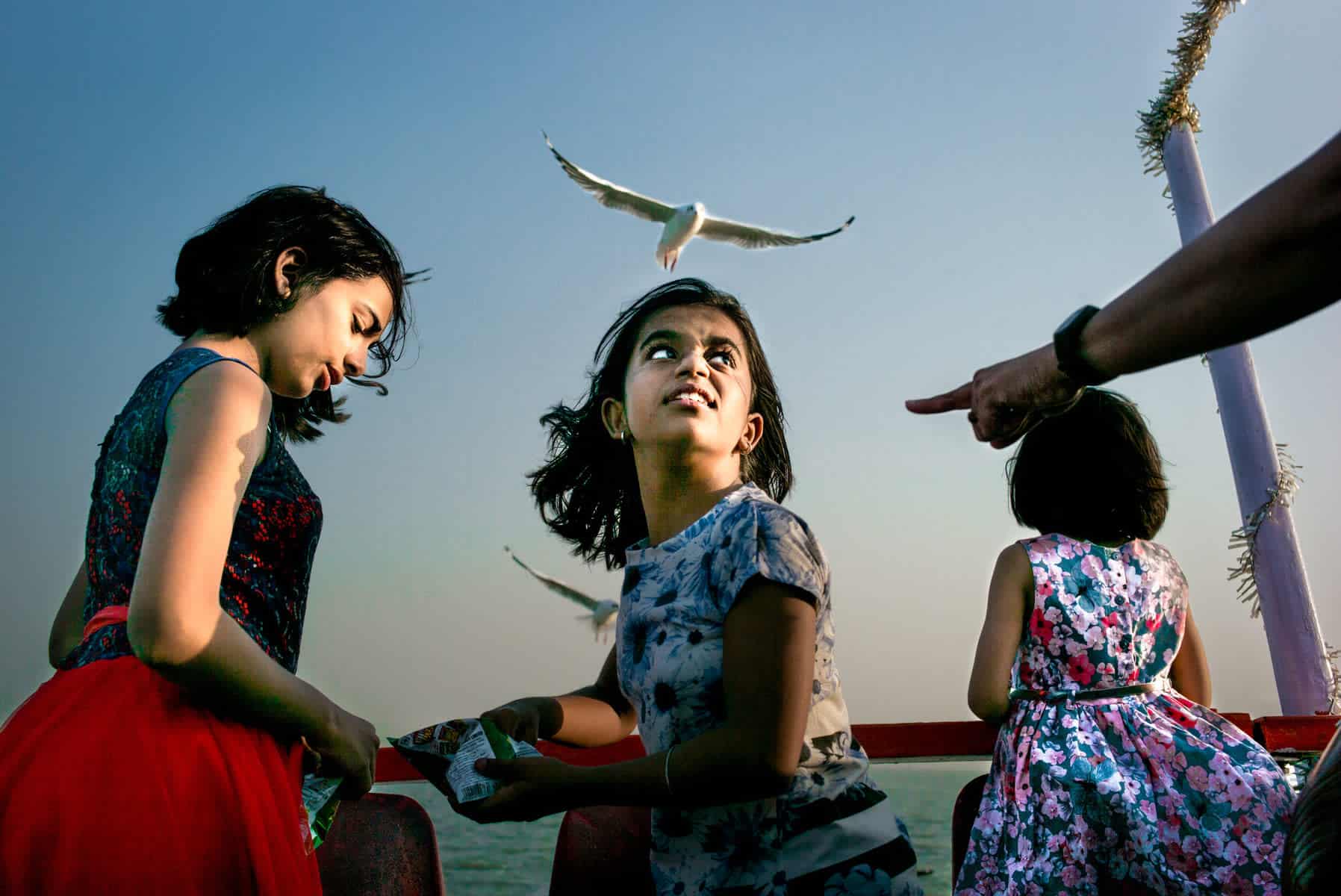
Three sisters feed the seagulls in Mumbai, from A Portrait of India
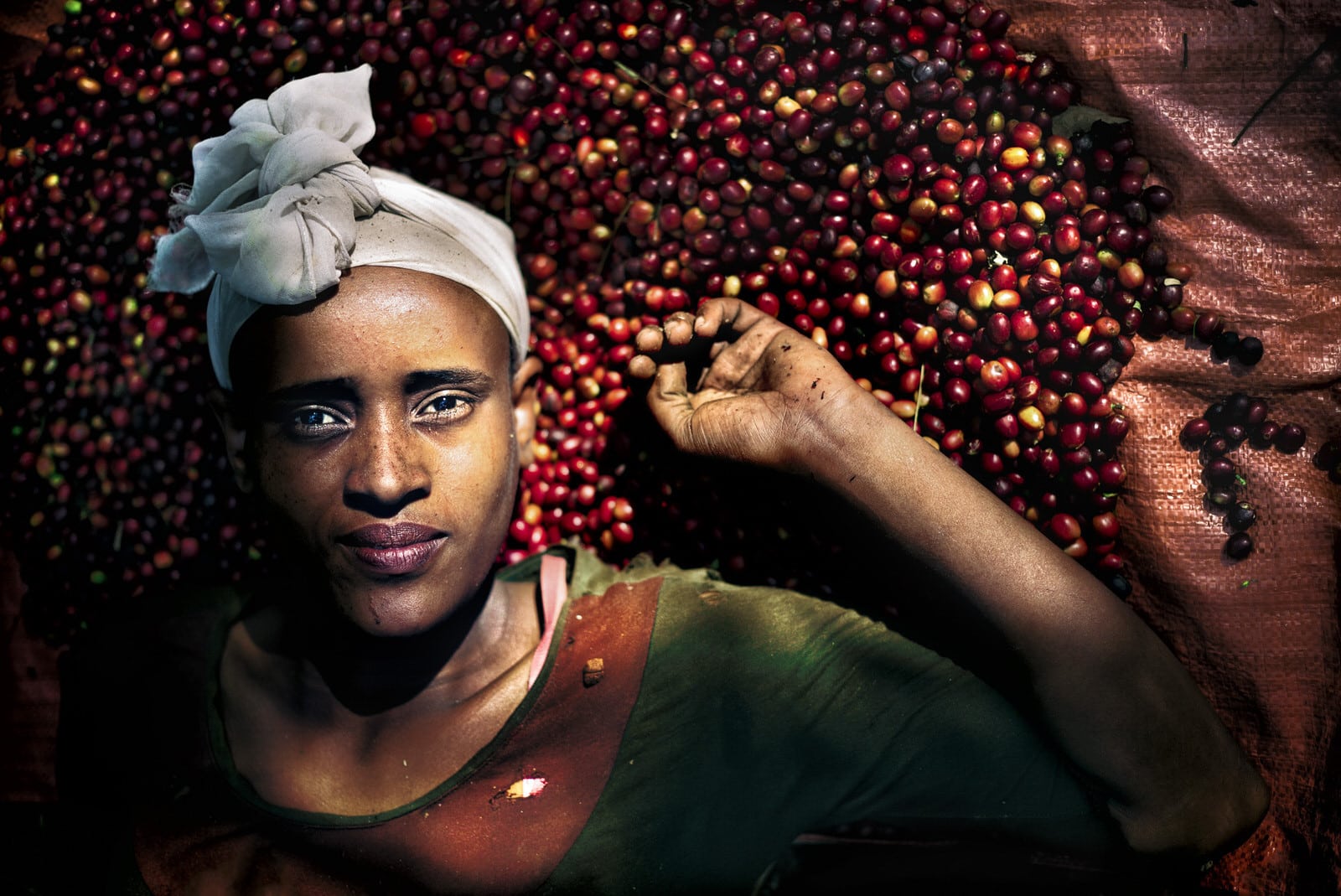
A coffee worker lies on a bed of coffee cherries, from Yayu Wildforest Coffee
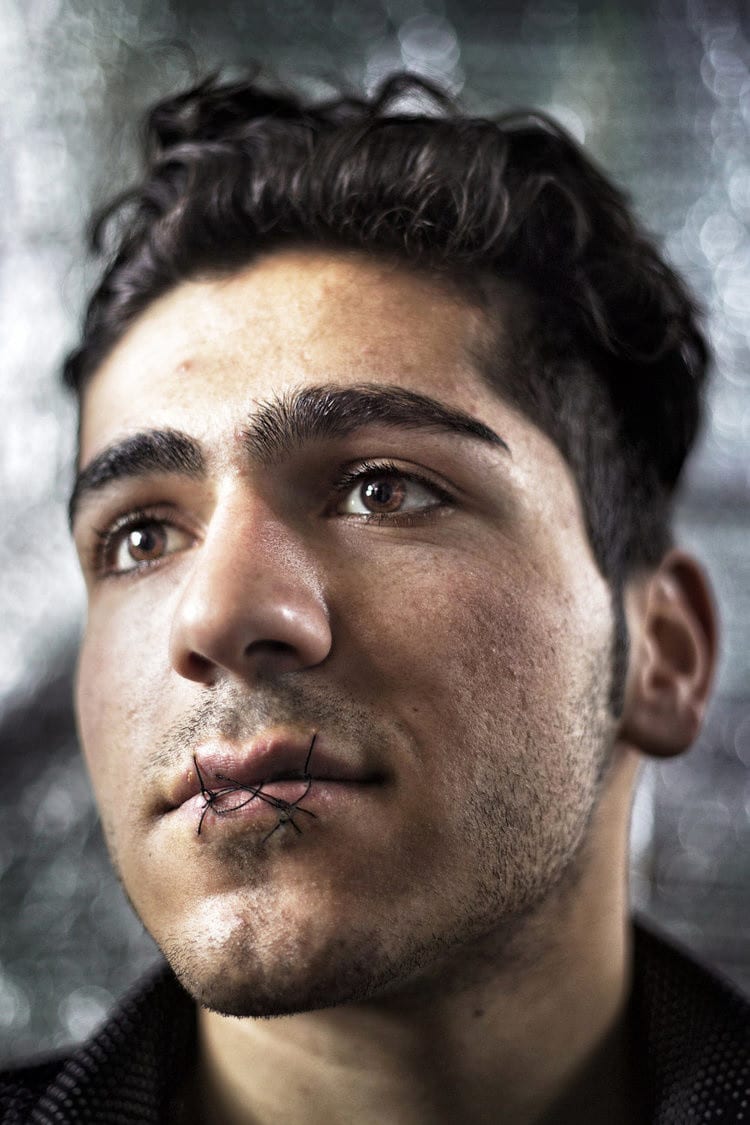
An Iranian teenage boy on hunger strike in the Calais Jungle, from Calais Jungle
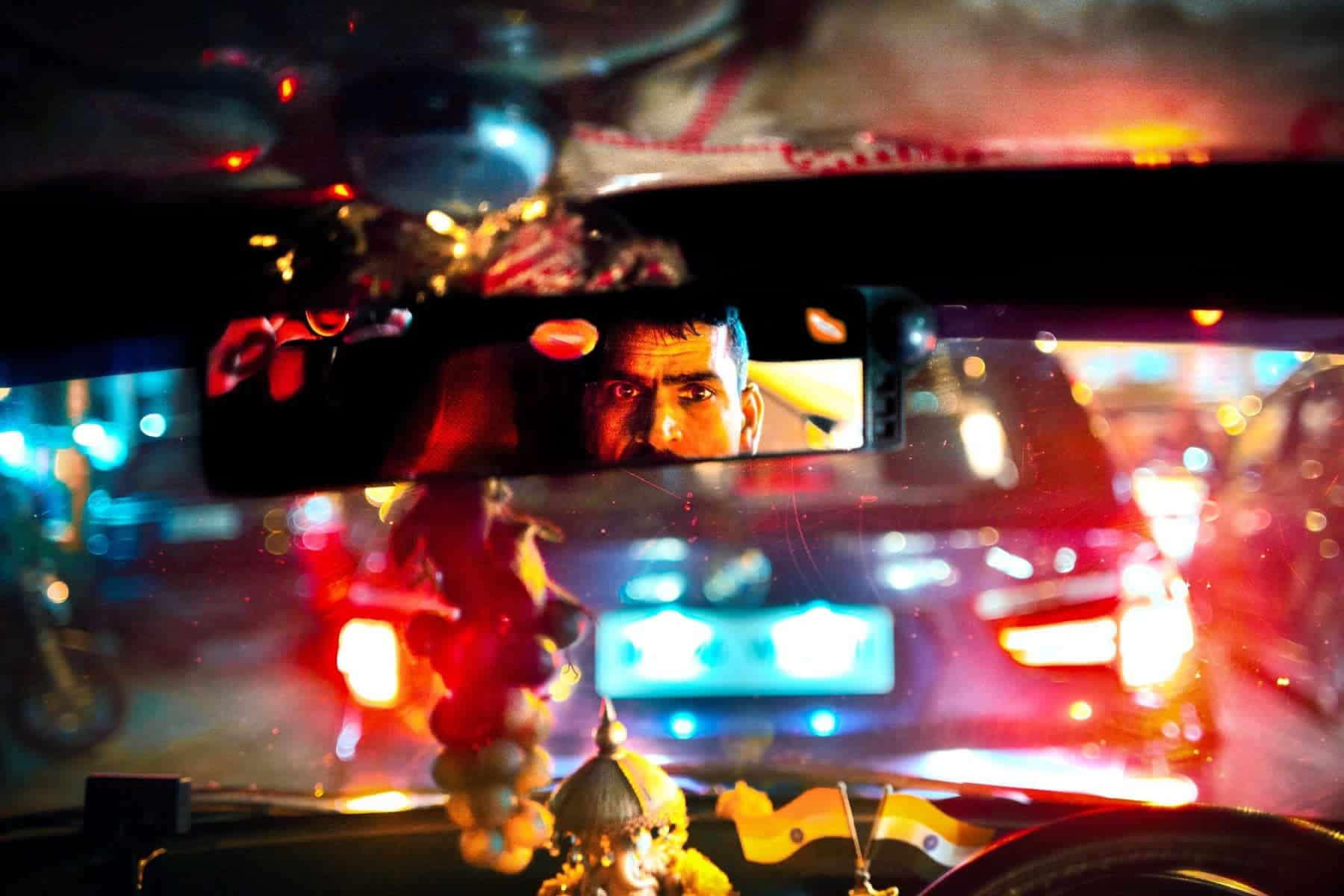
Taxi driver in Mumbai, from A Portrait of India
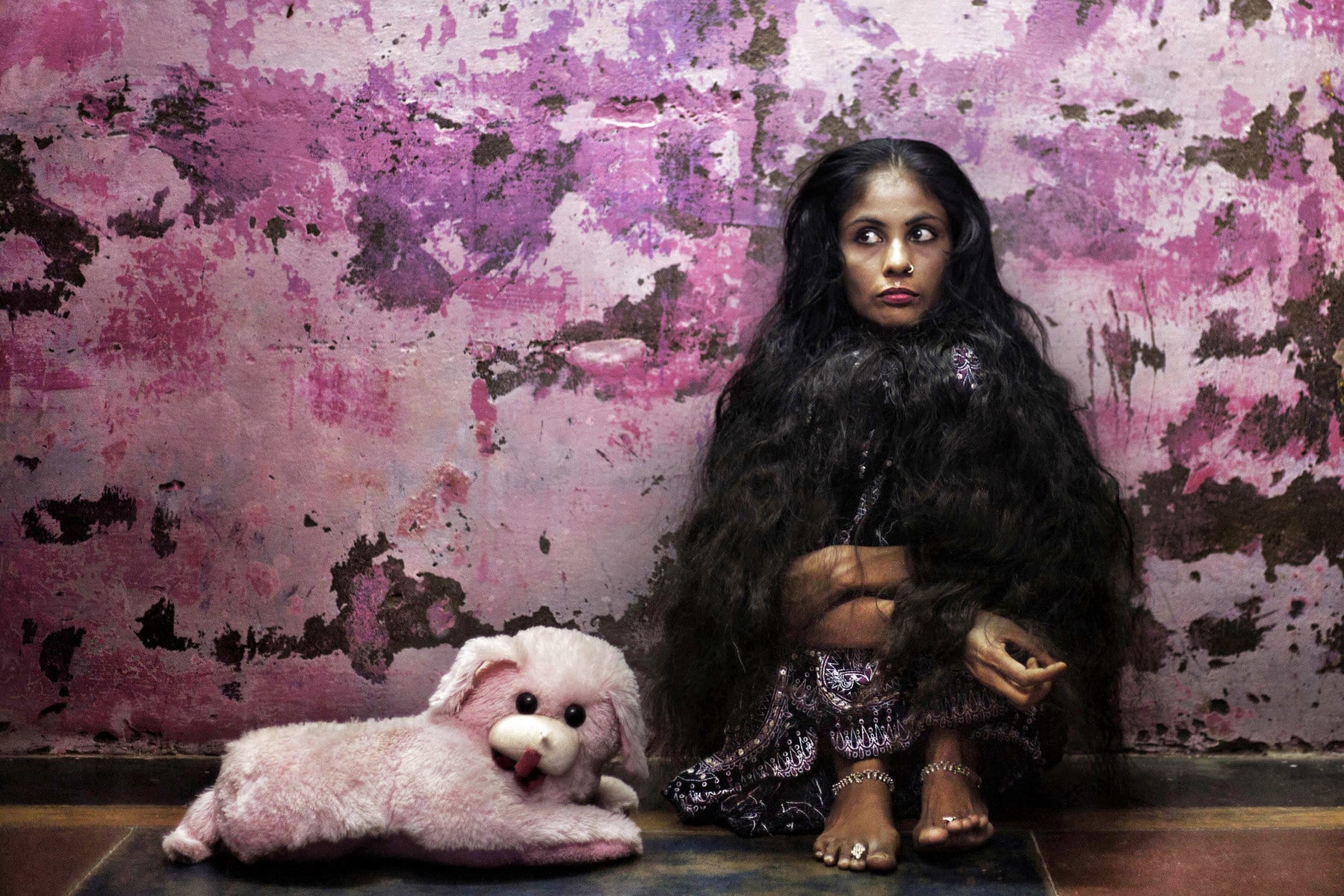
A sex worker in Rajasthan, from A Portrait of India
All photos courtesy Emily Garthwaite. Cover image is from A Portrait of India.
